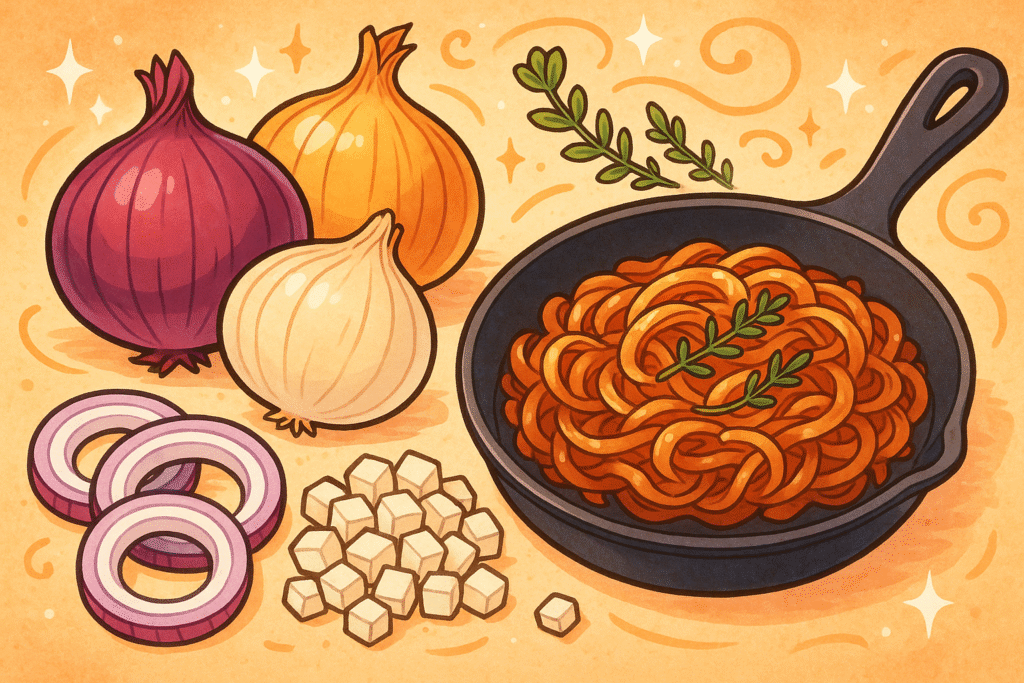Onion (Allium cepa)

About Onion
Onions are aromatic bulbs with sharp, sweet, and deeply savory qualities. Used raw or cooked in nearly every cuisine on Earth, they’re the cornerstone of soups, sauces, stir-fries, and stews.
Raw, they bite. Cooked low and slow, they turn into savory gold.
The History of Onion
Onions have been cultivated for over 5,000 years — used by ancient Egyptians, Babylonians, and Romans. They were both food and medicine, prized for preserving well and offering flavor year-round.
From Indian bhuna to French soupe à l’oignon, onions are foundational across borders and centuries.
The Science of Onion
Onions contain sulfur compounds that form syn-propanethial-S-oxide — the culprit behind crying when cutting.
They’re rich in quercetin, a flavonoid antioxidant, and prebiotic fibers like inulin, supporting gut health.
The Geography of Onion
Onions are grown almost everywhere, from India and China to the U.S., Egypt, and the Netherlands. They thrive in cool, dry climates and have countless regional cultivars.
Different types are prized for different uses — sweet onions for raw use, yellow for cooking, red for color and crunch.
Varieties of Onion
Yellow Onion
Balanced flavor — sharp raw, sweet cooked. Your everyday workhorse.
Red Onion
Bold color and mild heat. Great raw or pickled.
White Onion
Sharper and crisper. Common in Mexican and Latin cooking.
Vidalia
Sweet Georgia-grown onions. Ideal for sandwiches and roasting.
Shallot
Small, mild, and elegant. French sauces and vinaigrettes love them.
FAQs All your questions about Onion: answered
Why do onions make you cry?
Cutting onions releases sulfur compounds that irritate your eyes. Chilling onions or using sharp knives can reduce the effect.
Are red onions sweeter than white?
Yes — especially when raw. Red onions are milder and less sulfurous.
Can you caramelize any onion?
Yes — but yellow and sweet onions caramelize best due to their sugar content.
How should onions be stored?
Keep in a cool, dry place — not the fridge — unless they’ve been cut.